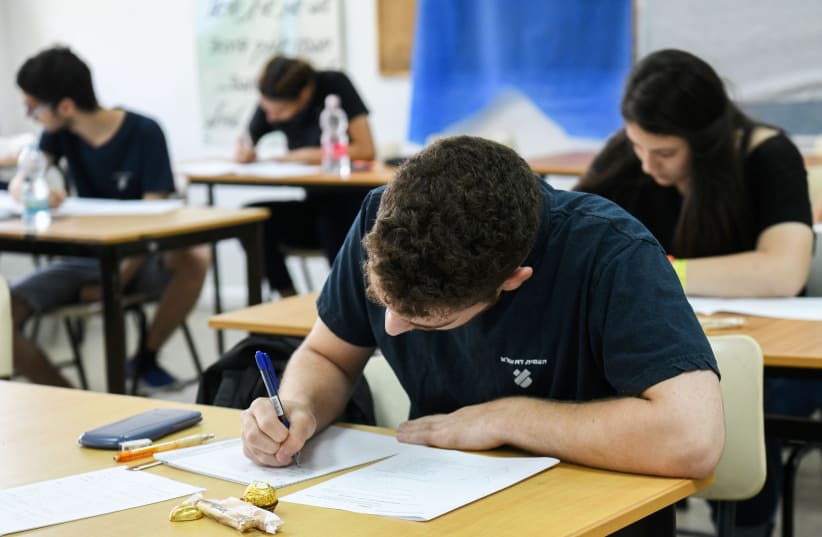The results of this year’s school achievement tests – known as the Meitzav exam – have been published for the first time since 2019, Israeli media reported Thursday.
According to the Education Ministry, the Meitzav – or ‘School Efficiency and Growth Indicator’ – is one tool for measuring how well students meet the expected level according to the curriculum.
The ministry published data collected by the National Authority for Measurement and Evaluation in Education (RAMA) in about 3,000 schools from before the war.
"The educational work of a school cannot be quantified in a single grade.” RAMA CEO, Dr. Gal Alon, said. “The data will always reflect only part of the picture, and no one can excel at everything.”
Walla News reported that schools were compared to those similar to them, either socio-economically or by population type.


The main change noted in this test from previous years was the decision to switch to verbal grades instead of numerical ones.
According to Ynet, the change was intended to reduce pressure and comparisons between schools. Academic institutions' fear of comparisons and criticism from parents have created a phenomenon of exam integrity violations and schools ‘hiding’ weak students so they wouldn't affect the school average.
"To understand and act better for our students and teachers, we must be able to see, alongside the personal picture, the general picture that often emerges most sharply from among the numbers.” Education Minister Yoav Kisch said after the publication of the results
“The results we publish now are an important work tool in this context. We will study them and rely on them on the way to launching the education system forward."
Former controversy
In 2012, the Supreme Court ruled that the data should be published in response to a petition by the Movement for Freedom of Information, which sought transparency regarding the state of schools.
However, the Education Ministry argued that the pressure such a ruling would create would lead to anxiety in students.
"Unfortunately, the Ministry of Education and RAMA has greatly discounted the education system at the expense of the public.” Attorney Rachel Edri-Hulta from the Movement for Freedom of Information said regarding the publication.
“There is an exceptional attempt here to change reality by presenting unclear data without giving coherent grades. Worse - the clear grades collected for years and gave clear indications regarding schools were omitted and turned into text, making comparisons difficult. We regret that after such a long time, a complex legal process, and a clear verdict, such lacking data was released."
